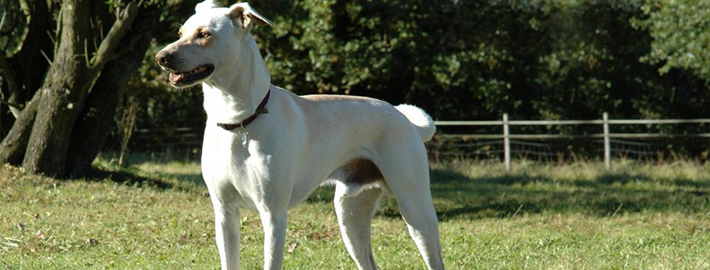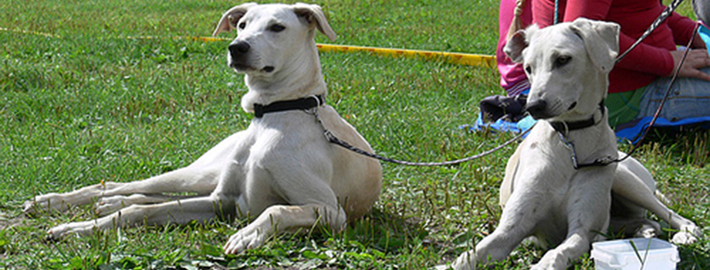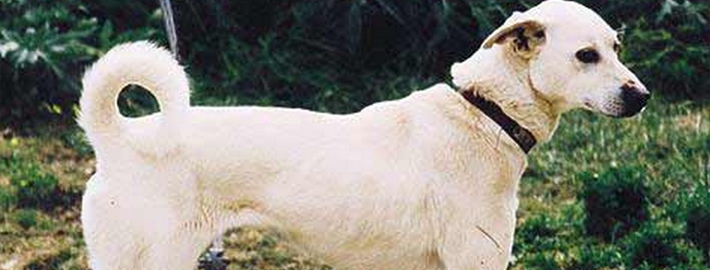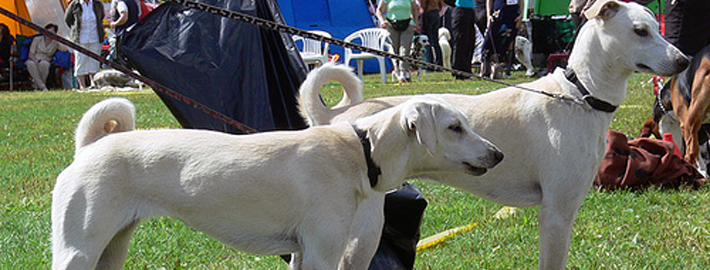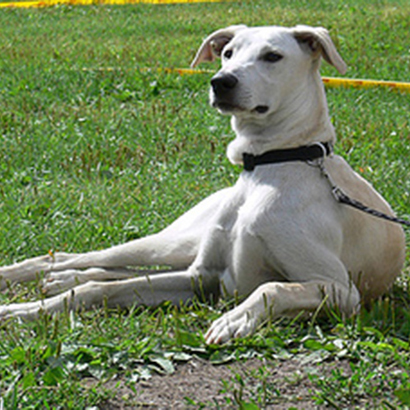What makes the Cretan Hound Unique?
A primitive hunting breed, its existence on the Greek island of Crete is documented in writing and artifacts for at least 3500 years. It was extensively cultivated and used by the Minoan civilization which, at its peak, dominated over most part of the Aegean, the Cyclades islands and eastern Peloponessus.
Breed Groups
Page Contents
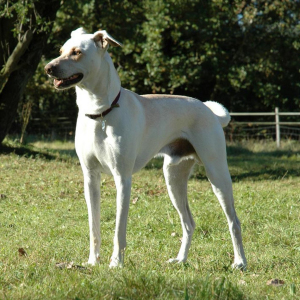
Is the Cretan Hound Right For You?
The Cretan Hound is a breed of hunting dog native to the Greek island of Crete. A persistent, deadly and relentless hunter, the Cretan Hound is a different story when at home. It is docile, calm, obedient and well mannered inside the home. It has a stable and well balanced temperament that makes it an ideal family pet. Excellent, gentle and affectionate with children, the dog gets along well with other dogs in the family but can not be trusted around other non-canine pets due to its high prey drive. It is an intelligent and attentive breed that has protective instincts as well. The dog will make a good watch dog and will signal arrival of an stranger to its family. This dog has adapted to wide and open spaces of the rocky and mountainous terrain of Crete Island which makes it unsuitable for apartment life style. This brave and tireless hunter is full of dash and vigor when hunting but the dog is docile, calm, obedient and well mannered inside the home, truly the perfect home companion.
The Cretan Hound has high exercise needs. It will need large yard to play and run. Also the dog would need to be taken on daily walks and provided ample playtime. It can be a good jogging partner.
In 5 Words
- Tolerant
- Elegant
- Gentle
- Meek
- Persistent
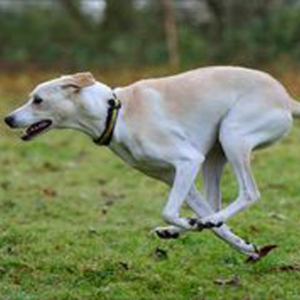
Characteristics
Learn About the Cretan Hound
Description
Cretan hounds have a slender body that places them somewhere between a scenthound and sighthound. The head of this dog breed is in the shape of a wedge. During the chase, its pricked ears fold backwards, just like that of a greyhound. The skin may reflect many colors and fits tightly on the body. Their distinct tail is long and curved upwards, forming a ring. At the base, the tail is covered with a brush of longer hair. The legs are well-muscled, strong and slender and the ribcage is spacious, without being too broad or too rounded.
Nose color can be black, brown and deep chestnut. Medium sized almond shaped eyes have dark colored irises and well pigmented eyelids. Medium sized triangular ears are erect. Broad at the base, the high set ears are slightly rounded at the tip. The muscular straight back is strong. The rather short but powerful loin is muscular, dry and with a good tuck up. The tail that is set quite low does not reach the hocks. The broad based tail tapers towards the tip. Longer hair that covers the underside of the tail forms a brush. At rest, the tail hangs downwards.
Short History of the Cretan Hound
Cretan hounds reveals that these dogs have existed for over 3500 years. The ancient Minoan civilization extensively cultivated and used this breed. These hounds were used for chasing and catching hare and wild rabbits in harsh terrains of Crete. Some ancient authors have called them the best hare-hunting dogs. . They also have strong guarding instincts. The breed was used by the Minoan civilization of ancient times for catching wild rabbits and hare. The Cretan hounds were then exported to European countries and other colonies of Greece. Cross breeding with the Cretan Hound was done to improve the breeds of local hounds.
The ancestry of the Cretan Hound dog breed can be traced to Africa.The Aegean, the islands of Cyclades as well as the eastern Peloponessus were ruled by the Minoan Crete. The Cretan Hound was extensively used by the Minoan civilization. The Cretan Hounds reached other Greek Colonies. Because of Crete’s proximity to the shores of Egypt and northern Africa it is highly possible that the sea going Minoans that trade goods with ancient Egypt have traded dogs as well. As Crete ships have sailed the Mediterranean Sea and beyond, the Cretan Hounds have reached other countries in Europe. The Cretan Hounds have been mixed and have improved breeds of dogs in the British Isles, Southern Italy, southern France, Malta and Spain. Hounds with similar looks and deemed to be relatives of the Cretan Hounds are found today in these countries.
Temperament
The Cretan Hound is an extremely efficient and passionate working dog that is deadly on the chase. They are polite, calm, and aristocratic at home, and they are slightly reserved with strangers somewhat reserved, with his family tender, expressive and devoted, calmly co-existing with other house pets and farm animals (“parippos”=horse-by; used to run alongside the riders in antiquity) and in general the hound’s behavior is balanced and reliable.
Slow maturing and highly instinctive. His senses are remarkably acute and he has a great degree of perceiving ability, liveliness and a sharp mind.These social dogs thrive on strong and dependable relationships with humans, and love to receive attention and praise. This breed is highly intelligent and generally easy to train. As a pet, the Cretan Hound is obedient, loyal, loving, and affectionate. The Cretan Hound is not suited for full-time indoor or apartment living, as it enjoys spending time outdoors, playing games such as fetch, and having plenty of room to roam, run, and play.
Caring for Your Cretan Hound
Grooming & Bathing
Brush the coat with a firm bristle brush and bathe in mild soap only when required. Occasionally, you may need to dry shampoo the Cretan hounds. Trim the nails regularly. The breed is an average shedder.Being a hunter, the dog can get very dirty and smelly. The dog can be bathed using a mild soap. The feet, the mouth and the ears must be regularly checked and cleaned. The nails must be regularly trimmed as well. The Cretan Hound is a fairly healthy breed with very few health concerns. A premium quality dog food is essential for this breed and so is regular exercise
Exercise & Training
Obedience training will not be a problem with the Cretan Hound as the dog manifests an eagerness to please attitude. It is intelligent and bright dog that will respond to positive training methods.
The Cretan Hound has high exercise needs. It will need large yard to play and run. Also the dog would need to be taken on daily walks and provided ample playtime. It can be a good jogging partner.

